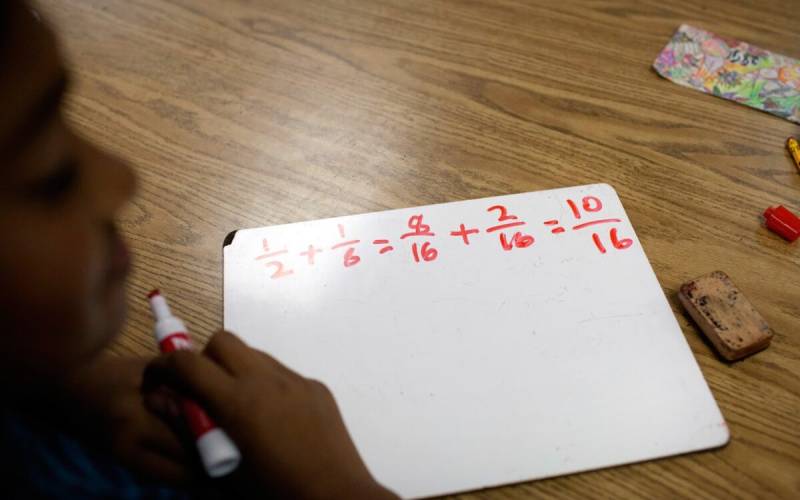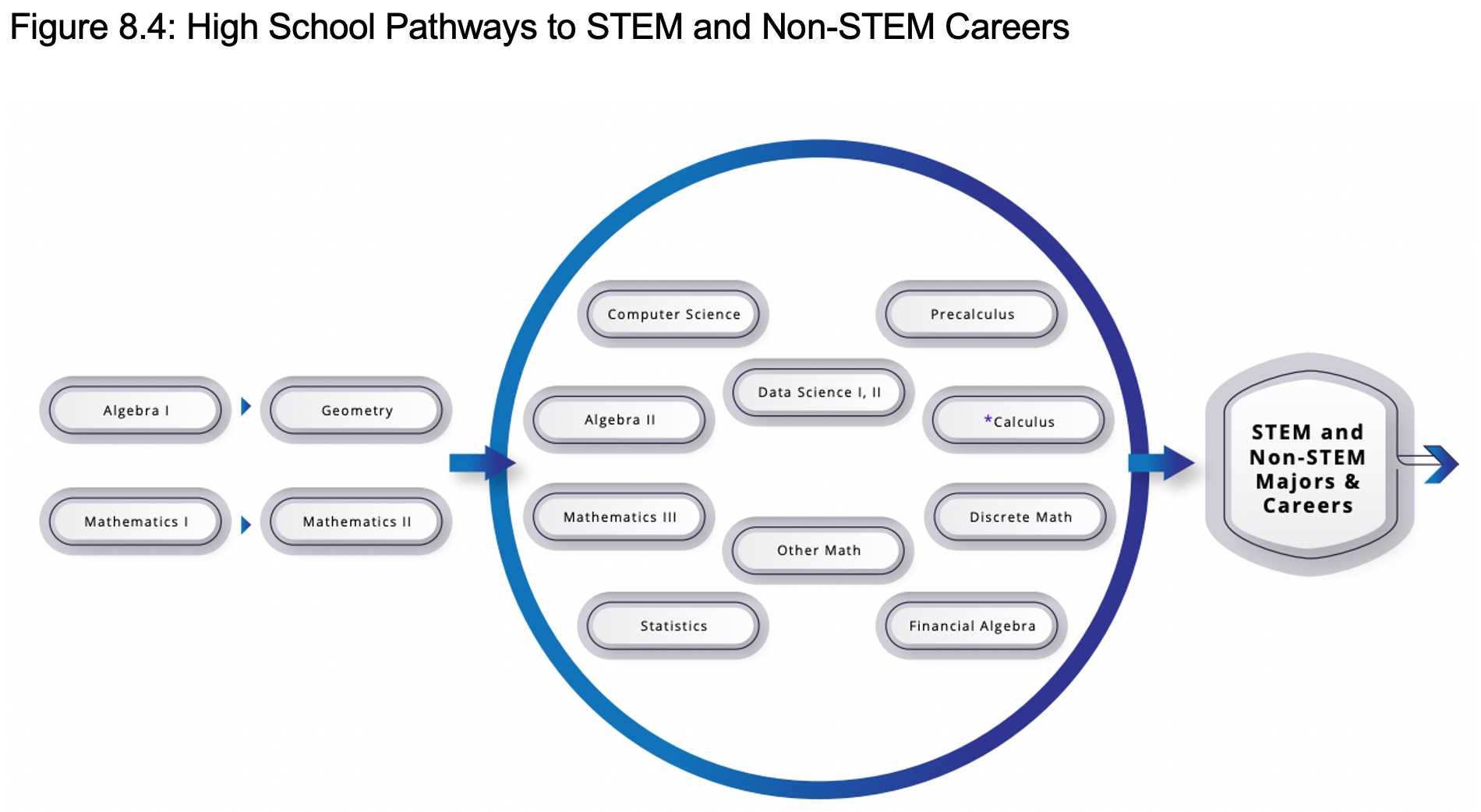School districts have considerable latitude to design third- and fourth-year courses, and the framework cites Financial Algebra, comparable in rigor to Algebra II, where students do mathematical modeling related to personal finance. Another is Transition to College Math and Statistics (PDF), which Stevenson designed in partnership with Los Angeles Unified. It provides math practices, like reading and interpreting data from two-way frequency tables and bar graphs, for high school seniors uncertain of their plans for college.
The goal should be flexibility, keeping students’ options open. The framework cites examples of students’ journeys: A student who plans to major in non-STEM graphics arts discovers an interest in software applications, so she takes Pre-calculus as a senior with a support class, setting herself up for freshman calculus and programming classes. After the standard first two years of math, another student who plans to work in a fabrication shop after graduation takes a course in modeling to understand the math of three-dimensional printing.
High school sequences have drawn the most contention, but it’s the underlying instructional strategies that could create the framework’s biggest impact. The approach, which academics call constructivism, underlies the math standards that were adopted in California in the early 1990s, then abandoned after a grassroots revolt in 1997. While the changes wouldn’t be new, they could be drastic, fundamentally turning classroom instruction on its head.
The framework defines the difference in contrasting the beliefs in “unproductive” and “productive” roles of teachers.
The former, found in many classrooms, is “to tell students exactly what definitions, formulas, and rules they should know and demonstrate how to use this information to solve mathematics problems. The role of the student is to memorize information that is presented and then use it to solve routine problems on homework, quizzes, and tests.”
The latter should be “to engage students in tasks that promote reasoning and problem-solving and facilitate discourse that moves students toward shared understanding of mathematics. The role of the student is to be actively involved in making sense of mathematics tasks by using varied strategies and representations, justifying solutions, making connections to prior knowledge or familiar contexts and experiences, and considering the reasoning of others.”
Connecting to the world around them
Math isn’t working for the majority of students, the framework says, because there’s no context or connection with what they learn from one day to the next or to the world around them. A year is divided into units of “power standards,” which are taught individually, demonstrated with a procedure, and then assessed, before moving on to the next one.
The alternative is to tap into students’ curiosity with the goal of building deep understanding of math ideas. Classes should start with student-based questions about math and explore from there. Teachers should anchor lessons to “big ideas” in each grade that connect clusters of standards within the topic, like number sense, and across domains to show how algebra relates to geometry. Big ideas in third grade include fractions as relationships and number flexibility to 100; in sixth grade, they include relationships between variables.
“The framework is saying that we really need to make sure that the conceptual precedes the procedure to provide the understanding, so that when we get to those steps later on, we understand the why behind it. It’s not a mystery any more,” said Sampson.
A teacher might start off this way, said Stevenson: “Here’s the situation: What do you notice and wonder about it? Here’s a bunch of things that we’re going to talk about today. Which ones do you already know?” Answers will lead to procedures needed to solve it, whether how to do two-digit multiplication or to calculate the volume of a cylinder.


